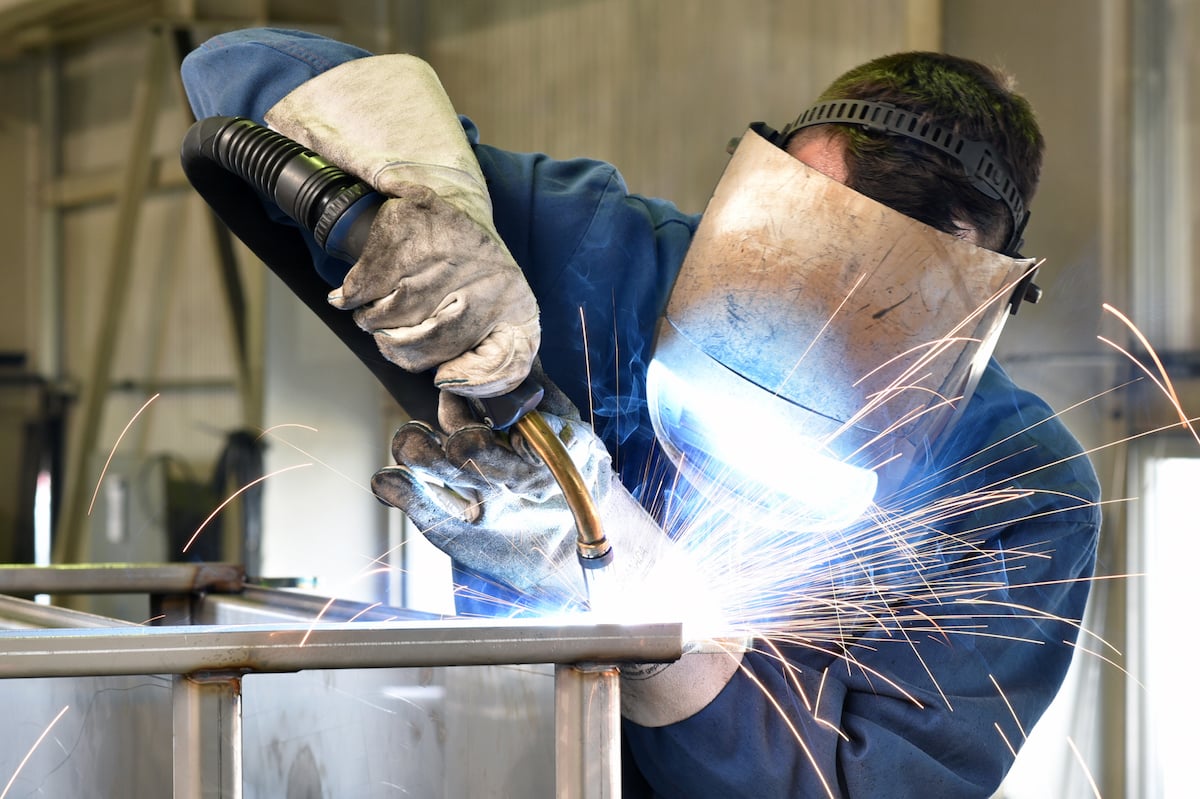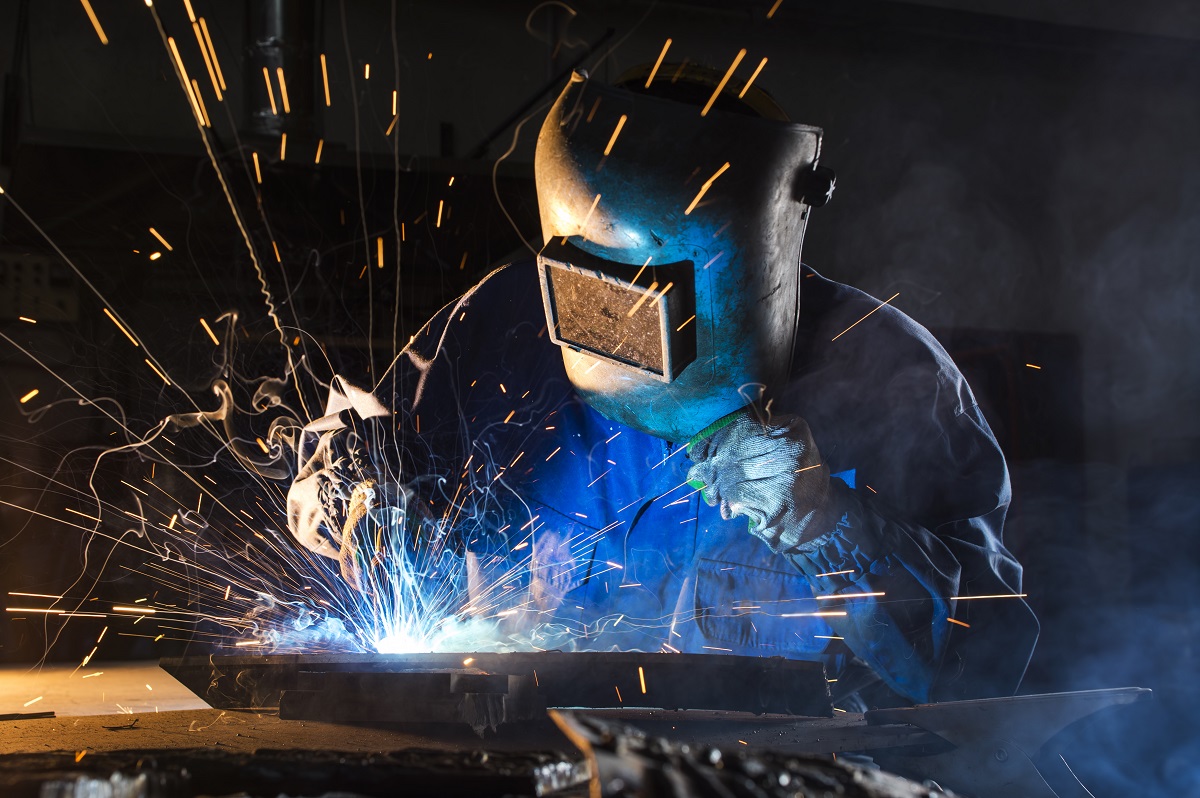All About Welding: Trick Insights Into Techniques and Ideal Practices for Success
Welding includes a selection of techniques, each fit for particular products and applications. Comprehending these techniques, such as GMAW, SMAW, and TIG, is crucial for attaining optimal outcomes. Moreover, the best devices and safety methods can not be neglected. As preparation and repairing play critical duties in the welding procedure, understanding these components can greatly boost the quality of the end product. What are the essential elements that ensure a successful weld?
Comprehending Different Welding Techniques
Welding methods incorporate a variety of approaches, each fit to certain applications and products. Among one of the most common techniques are Gas Steel Arc Welding (GMAW), Secured Steel Arc Welding (SMAW), and Tungsten Inert Gas Welding (TIG) GMAW, likewise referred to as MIG welding, is prominent for its rate and flexibility, making it ideal for thin products. SMAW, or stick welding, is preferred for its simplicity and performance in exterior settings, specifically with thicker steels. TIG welding uses precision and control, making it ideal for intricate job and non-ferrous steels (Belgrade). Each method has its one-of-a-kind advantages and considerations, allowing welders to choose the finest approach based on the project's requirements, product type, and wanted results. Comprehending these methods is necessary for effective welding
Vital Welding Equipment and Tools
While numerous welding strategies need certain skills, the right devices and devices are equally vital for achieving quality results. Necessary welding devices consists of welding machines, which differ depending upon the method-- such as MIG, TIG, or stick welding. Protective equipment, including aprons, helmets, and gloves, warranties safety and security and convenience throughout the procedure. Additionally, components and clamps assist safeguard products in position, guaranteeing accuracy in welds. Consumables like welding rods, cord, and shielding gas are likewise essential components that influence the top quality of the weld. Devices such as cutters and mills help with surface prep work and post-weld ending up, adding to an expert result. Purchasing high-quality tools ultimately boosts the performance and efficiency of welding tasks.
Safety Practices in Welding
Appropriate safety methods are important in the welding sector to shield workers from possible dangers. Welders have to use appropriate personal protective equipment (PPE), consisting of safety helmets with correct shading, gloves, and flame-resistant clothes. Sufficient air flow is crucial to reduce direct exposure to unsafe fumes and gases produced during the welding procedure. Furthermore, employees should be learnt the right handling of welding devices to avoid accidents. Fire safety measures, such as keeping combustible materials away from the welding area and having fire extinguishers conveniently available, are needed. Regular assessments of equipment and offices can help identify prospective hazards prior to they bring about crashes. By adhering to these security methods, welders can develop a more secure working atmosphere and decrease threats connected with their trade.
Readying Products for Welding
Preparing materials for welding is a vital action that greatly influences the quality and stability of the final product (Montana Mobile Welding and Repair Belgrade). Correct prep work entails cleansing the surfaces to remove contaminants such as dust, rust, and oil, which can compromise the weld. Techniques such as grinding, fining sand, or making use of solvents are typically utilized to accomplish a clean surface area. Additionally, ensuring that the products mesh comfortably is vital; spaces can result in weak welds. It's also essential to consider the placement and positioning of the elements, as this will impact the simplicity of welding and the final result. Selecting the suitable filler product and guaranteeing compatibility with the base metals is vital for accomplishing strong, sturdy welds.
Tips for Getting High-Quality Welds
Achieving premium welds needs attention to detail and adherence to finest methods throughout the welding procedure. Correct joint preparation is necessary, making certain surfaces are clean and complimentary from contaminants. Choosing the proper filler material and welding method based on the base metals is essential for excellent bonding. Keeping consistent traveling speed and angle while welding can advertise and stop defects harmony. Additionally, controlling warmth input is important; extreme warm can cause warping and damaged joints. If necessary, frequently examining the welds throughout the process permits for immediate changes. Utilizing suitable post-weld therapies, such as cleansing and stress relief, can boost the toughness and honesty of the weld, inevitably guaranteeing a successful end result.
Troubleshooting Typical Welding Issues
Welding frequently presents obstacles that can impact the quality and stability of the last item. Typical problems such as porosity, inconsistent weld grains, and getting too hot can develop, each calling for specific repairing methods. Understanding these problems is crucial for welders to boost their skills and achieve optimal outcomes.
Porosity Problems Explained
Although porosity can often be overlooked, it stays a critical concern in welding that can endanger the integrity of a completed product. Porosity describes the existence of tiny gas pockets within the weld grain, which can lead and damage the joint to early failing. This issue generally arises from contaminants, wetness, or improper securing gas protection during the welding procedure. To alleviate porosity, welders should confirm that the base materials are dry and tidy, use proper securing gases, and maintain regular welding specifications. Routinely evaluating the equipment and environment can also aid determine potential concerns prior to they manifest in the weld. Dealing with porosity properly is crucial for accomplishing solid, long lasting welds that fulfill quality requirements.

Inconsistent Weld Beans
Irregular weld grains can greatly influence the high quality and toughness of a completed product. Various factors add to this concern, including inappropriate travel rate, incorrect amperage setups, and irregular electrode angles. When the welder moves as well swiftly, a grain might show up slim and lack infiltration, while moving as well gradually can create extreme buildup. Additionally, utilizing the incorrect amperage can result in either damaging linked here or excessive spatter, both of which concession weld stability. The welder's technique, such as irregular lantern activity, can also cause irregular bead appearance. To minimize these troubles, welders should concentrate on maintaining consistent, regulated movements and ensuring appropriate tools setups to attain uniformity in their welds. Consistency is essential to achieving trustworthy and solid welds.
Getting Too Hot and Warping Issues
Extreme heat throughout the welding procedure can result in significant getting too hot and buckling problems, affecting the architectural stability of the workpiece. These troubles usually show up as distortion, which can endanger placement and fit-up, making more assembly testing. Elements adding to overheating consist of the selection of welding criteria, such as voltage and take a trip rate, as well as the sort of material being bonded. To mitigate these problems, welders must keep regular travel rate and ideal warm input while monitoring the work surface temperature. Additionally, pre-heating or post-weld warmth treatment can assist ease stress and anxieties triggered by rapid air conditioning - Fabrication. Routine examination and adherence to finest methods are vital in stopping getting too hot and guaranteeing the long life and dependability of bonded structures
Regularly Asked Questions
What Are the Profession Opportunities in the Welding Market?
The welding industry supplies diverse career chances, including positions as welders, inspectors, designers, and educators. Experts can operate in production, building and construction, aerospace, and automobile sectors, gaining from solid need and affordable salaries in numerous duties.
Just How Can I Boost My Welding Rate Without Giving Up High Quality?
To enhance welding rate without giving up quality, one ought to practice reliable methods, preserve equipment, maximize settings, and enhance hand-eye control. Regular training and seeking comments can additionally substantially contribute to attaining quicker, premium welds.
What Certifications Are Readily Available for Welders?
Countless qualifications exist for welders, including those from the American Welding Society (AWS), the National Center for Building Education And Learning and Research Study (NCCER), and numerous industry-specific companies. These qualifications improve employability and demonstrate ability efficiency.
Just How Does Welding Affect the Characteristics of Metals?
Welding influences the homes of steels by altering their microstructure, which can result in modifications in firmness, ductility, and stamina. Heat input and air conditioning description rates during the procedure significantly seal welding affect these material features.
Can I Bonded Dissimilar Metals Together?
